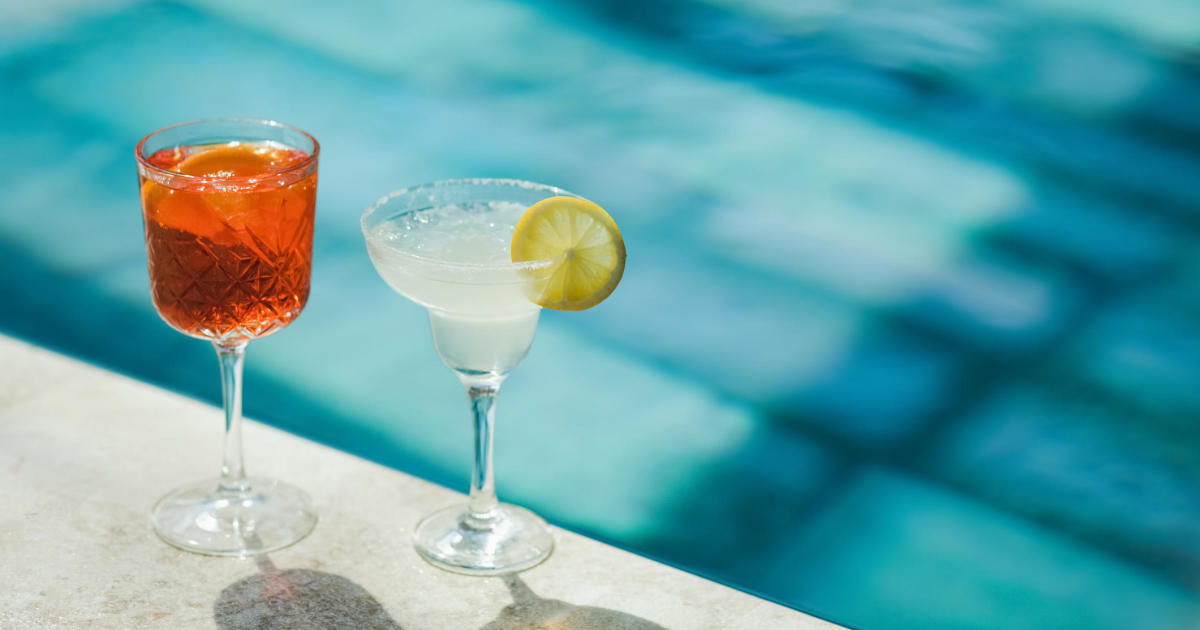
Planning to sip on a poolside cocktail this summer? Be aware of the lime wedge that may be adorning your glass, as the juice can cause more harm to your skin than you may think.
Often referred to as lime or margarita burn, experts say getting lime or other citrus juice on bare skin while in the sun can cause a serious skin reaction.
To help you prevent injury at your next outdoor happy hour, here's what you should know to stay safe:
What is margarita burn?
"A lime or margarita burn is a skin reaction called phytophotodermatitis," says Dr. Samer Jaber, a board-certified dermatologist at Washington Square Dermatology in New York. "It occurs when your skin is exposed to plant compounds called furanocoumarins. These compounds make your skin more susceptible to ultraviolet A (UVA) light."
What happens next is that a "red, itchy, blistering rash can develop wherever the lime juice touched your skin," he explains. "It can look like an irregular shape or like a streak mark where the juice dripped onto the skin."
Common plants that cause phytophotodermatitis include citrus fruits, celery and parsnip, he adds. A flowering plant called giant hogweed, which grows in parts of the U.S., can also cause the reaction.
Who can get a lime juice burn?
Any skin type can experience phytophytodermatitis, Jaber says, but if you burn easily or have light or red hair, then you may have a more severe reaction. The intensity of the rash also varies depending on the amount and intensity of exposure to the juice and sun.
"It can just be mild redness if you have a small amount of lime juice on your skin with a short duration of sun exposure," he says, which can last from days to weeks. "In situations when you are exposed for hours with a lot of lime on your skin, it can result in severe, painful, blistering burns resulting in open sores that require medical attention."
The Centers for Disease Control and Prevention explains the reaction creates a painful line of blisters where the juice was on the skin, which can lead to the "linear, brown, hyperpigmented patches that take weeks or months to resolve."
Jaber says these dark spots or hyperpigmentation can last years in some patients.
Phytophotodermatitis treatment
If you have phytophotodermatitis, Jaber says to treat the skin like you have a sunburn.
"Anti-inflammatory medications for pain control like Ibuprofen, healing ointments like Aquaphor or Vaseline to help heal the skin, over-the-counter hydrocortisone ointment and staying out of the sun can help," he says. "For more severe cases, see a dermatologist for appropriate medical management."
But the good news is phytophotodermatitis can be easily avoided. Jaber suggests:
- Washing your hands with soap and water if you're exposed to a causative ingredient like citrus juice
- Protecting your skin with a high UVA protection sunscreen
- Staying in the shade.
For gardeners, wearing gloves can also help protect your skin.
Health - Latest - Google News
June 13, 2023 at 07:03PM
https://ift.tt/YENw7Aq
Lime juice burn: Dermatologist explains phytophotodermatitis, how to stay safe - CBS News
Health - Latest - Google News
https://ift.tt/1GLTikB

No comments:
Post a Comment